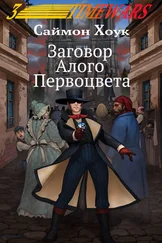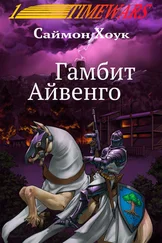Though far removed from major trade routes, Salt View was a popular destination for adventurers and pleasure seekers. Situated in the southern slopes of the Mekillot Mountains, it was a freewheeling gambling mecca where virtually any sort of entertainment could be found—for a price. Those who sought its expensive, libertine diversions paid handsome fees to join small, well-protected caravans from Gulg or Nibenay to Salt View. Such a trip was not without its hazards, however. Aside from the dangers of the harsh and inhospitable terrain, there was the added risk of an attack by marauders, who lived in the foothills of the Mekillots and preyed on travelers and raided the caravan routes to the west.
A trade route from North Ledopolus could skirt the southern edge of the crystal plain and run across the desert to the oasis where they had camped the previous night. From there, it could continue around the great silt basins to the east, following their shores before turning north, toward the Mekillots, crossing the salt plain at its narrowest point. It would make for a much easier and safer journey to Salt View then approaching it from Nibenay or Gulg.
If the bridge across the estuary could be completed, Sorak was sure the governing council of Salt View would share the expense of establishing the new trade routes, and North Ledopolus would quickly grow from a small village to a large and thriving caravan town. Knowing this, the dwarves had labored ceaselessly for years to bridge the estuary, carrying the burden of the elaborate construction and doing battle with the giants.
The merchant houses of Altaruk could easily have supported the dwarven venture with additional construction crews and mercenaries. For that matter, Sorak thought, any of the great houses could have raised an expeditionary force to drive the giants out of Ledo Island. However, for undertaking such a costly enterprise, they would doubtless expect a proprietary share in the causeway, and that would reduce the potential profits to the dwarves.
It seemed to Sorak that the dwarves were going about it the hard way. If they had cut one of the merchant houses in for a proprietary share of the causeway, the estuary would have been bridged by now, and any losses the dwarves might have sustained from a merchant house taking a percentage of the tolls would have been offset by the increased revenues.
But dwarves were uncommonly stubborn, and once they had determined their focus, nothing would deflect them from it. They wanted full ownership of the causeway and would settle for nothing less. As a result, nothing was exactly what they had, even after years of struggling to complete the project.
Well, not quite nothing, perhaps. They had clearly made some progress. The construction that extended into the estuary from South Ledopolus reached almost halfway out to Ledo Island. From North Ledopolus, another section of the causeway stretched across the silt, extending about two miles from the shore.
The giants could not wade out from the island to attack the bridge at just any point. In some places, the silt would rise over their heads and drown them, so they could destroy only whatever sections they could reach. This meant the dwarves made progress with one section while the giants attacked another. Then the silt would shift along the estuary bottom and the situation would be reversed.
Where the sections of the bridge began, near either shore, the dwarves had widened the causeway considerably, not only to allow for the eventual passage of large caravan vehicles, but also to accommodate defensive fortifications, including catapult emplacements and towers for archers.
Those recently constructed sections of the causeway that extended farther out across the estuary were narrower and not yet fortified. Consequently, they were more vulnerable to attack.
For the dwarves, the trick was to take advantage of the estuary’s shifting depth, extending new construction as quickly as possible when the giants could not reach it and gambling that there would be time enough to widen and fortify those sections before the giants could wade out to destroy them. Little by little, the dwarves made headway, but progress was excruciatingly slow, and one successful attack by the giants could undo months of work.
Apparently, that was exactly what had happened recently, for a large section of the bridge extending out from North Ledopolus was newly wrecked, and dwarven work crews labored to repair the damage.
With each new catapult emplacement and each new defensive tower built along the causeway, the giants’ assault retreated. But before those works could be extended, more pilings had to be driven down into the silt and reinforced, and new sections of the span constructed. More effort was expended in widening and fortifying the causeway than extending it. The dwarves had learned the hard way that it was pointless to extend the causeway beyond the protective reach of the catapults and towers. As a result, the bridge was slowly taking on the appearance of an elongated fortress, complete with battlements and crenelated towers constructed from thick adobe brick. Eventually, both sections would reach the island in the middle, and then the giants would find themselves under siege. The dwarves were already grimly preparing for that final battle.
As Sorak’s grandfather had written in his journal, each year, as a result of steadily increasing revenues, the dwarves’ mercenary force grew a little larger. However, the dwarves paid a price for building and maintaining their private little army, and it wasn’t just a matter of monetary expense. Mercenaries were a rough and unruly lot, and discipline had never been one of their virtues. Mixed in with a standing army under the command of seasoned officers, they could be controlled. But with a force composed entirely of mercenaries, who chose their own officers, discipline was a serious problem. While North Ledopolus was a quiet, sleepy dwarven village, South Ledopolus had become a rowdy, rough-and-tumble desert town where mercenaries did pretty much as they pleased.
The dark sun was sinking on the horizon as Sorak and Ryana booked passage on the last ferry of the day, paying with one of the silver coins they had brought back with them from Bodach. They could easily have loaded up their packs with gold and precious jewels from Bodach’s vast treasure hoard, but such wealth would attract too much attention. Ceramics made up by far the largest percentage of the world’s coinage, followed by silver and then gold. An aristocrat with purseful of gold coins would raise no eyebrows, but it would be decidedly unusual for two plainly dressed pilgrims to be paying in such currency, so they had taken only silver. They packed away no more than they could comfortably carry, but enough to see them through for a quite a while. And more than enough to tempt any would-be robbers, so they were discreet in how they carried it, keeping only a few coins in their purses and the rest hidden in their packs.
The ferry they boarded was constructed of blue pagafa wood, held aloft by the exertions of a floater—a psionicist specially trained to keep boats afloat on the shifting silt. It was a long, flat, open-decked boat about thirty feet from end to end and about twelve feet in the beam, with low gunwales and ten oarlocks to each side, with low bench seats for the dwarven rowers. There was a heavy mast set forward toward the bow, with a gaff-rigged sail stitched from dark green lizard hide. But despite the rising night wind coming in off the Great Ivory Plain and filling the patchwork, triangular sail, the oarsmen still needed to row. Even with the wind, the ferry made slow progress across the thick brown silt.
There was no place for them to sit, except on the deck. As they dropped down cross-legged among the other passengers, a mixture of dwarves and mercenaries heading across to South Ledopolus, Sorak tried to imagine what it must have been like in the ancient times, when the estuary was filled with water, when boats had plied it with the speed of the wind.
Читать дальше
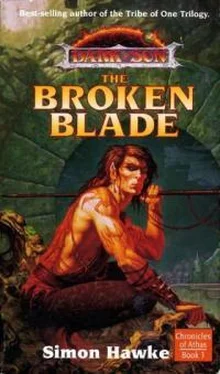

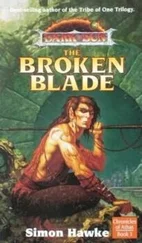
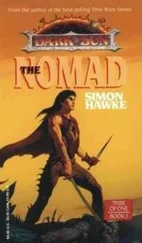
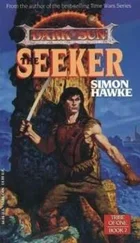
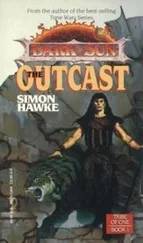
![Саймон Хоук - Гамбит Айвенго [litres]](/books/395778/sajmon-houk-gambit-ajvengo-litres-thumb.webp)
![Саймон Хоук - Заговор Алого Первоцвета [litres]](/books/436127/sajmon-houk-zagovor-alogo-pervocveta-litres-thumb.webp)
